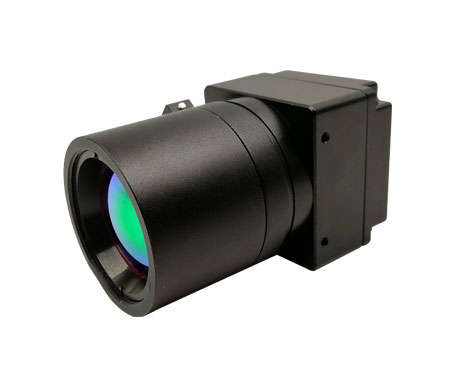Both shutter core and shutter-less core are the uncooled thermal imaging core, so it is important to figure out the meaning of uncooled core. Benefiting from new application expansion and price reduction, the uncooled infrared thermal image core market continues to expand. The following is a brief analysis and introduction of the temperature measurement principle, system analysis and performance parameters of the uncooled infrared thermal image core.


1. Temperature Measurement Principle and Theoretical Basis of Uncooled Infrared Thermal Imager Core
Compared with other temperature measurement methods, the infrared temperature measurement method has obvious advantages in the following two cases:
1.Measurement of the surface temperature field of a large-area target with uneven temperature distribution;
2.Quickly determine hot spots or overheated areas in a limited area.
On the basis of this, the uncooled infrared thermal image core greatly reduces the production cost of the thermal camera and increases the equipment utilization rate.
The core of the uncooled infrared thermal imaging system is the uncooled focal plane, which is a thermal element that uses the sensitive properties of certain substances to detect infrared radiation energy. The basic principle of uncooled infrared detectors for detecting infrared radiation consists of two processes:
After the detector absorbs the radiation, the temperature increases accordingly. With the change of the incident radiation power, the temperature of the component also changes accordingly;
Using the sensitive characteristic of a certain temperature of the component to convert the temperature change caused by the radiant energy into a corresponding electrical signal, or using the sensitive characteristic of the temperature of the component to adjust the magnitude of the current intensity in the circuit, thereby obtaining a corresponding electrical signal, the above is the process of measuring the temperature change of an object.
The analysis of uncooled infrared thermal imaging core begins with the temperature rise of sensitive components caused by infrared radiation, depending on the detection of temperature rise by the detection mechanism.
System Design Analysis of Uncooled Infrared Thermal Image Core
The system structure of the uncooled infrared thermal image core is generally divided into two parts: a hardware circuit system and a software processing system.
The hardware circuit system can play a key role in the data segment transmission and use efficiency, and determines whether the imaging process can be realized.
The software processing system is to make the thermal image core more practical, improve its ability to identify the target or the object to be measured, and analyze the details. Both of them are indispensable for the system of uncooled infrared thermal image core.
2. Performance Parameters of Uncooled Infrared Thermal Imaging Core
The performance parameters of uncooled thermal imaging core mainly include the following aspects:
Noise equivalent temperature difference (NETD);
Minimum resolvable temperature difference (MRTD);
Minimum detectable temperature difference (MDTD);
Non-uniformity (NU);
Signal transfer function (SiTF);
Modulation transfer function (MTF).
Uncooled infrared thermal imaging core has other performance parameters such as focal plane array noise, field of view FOV and focal length f, system resolution, system distortion, and system optical coaxiality.
